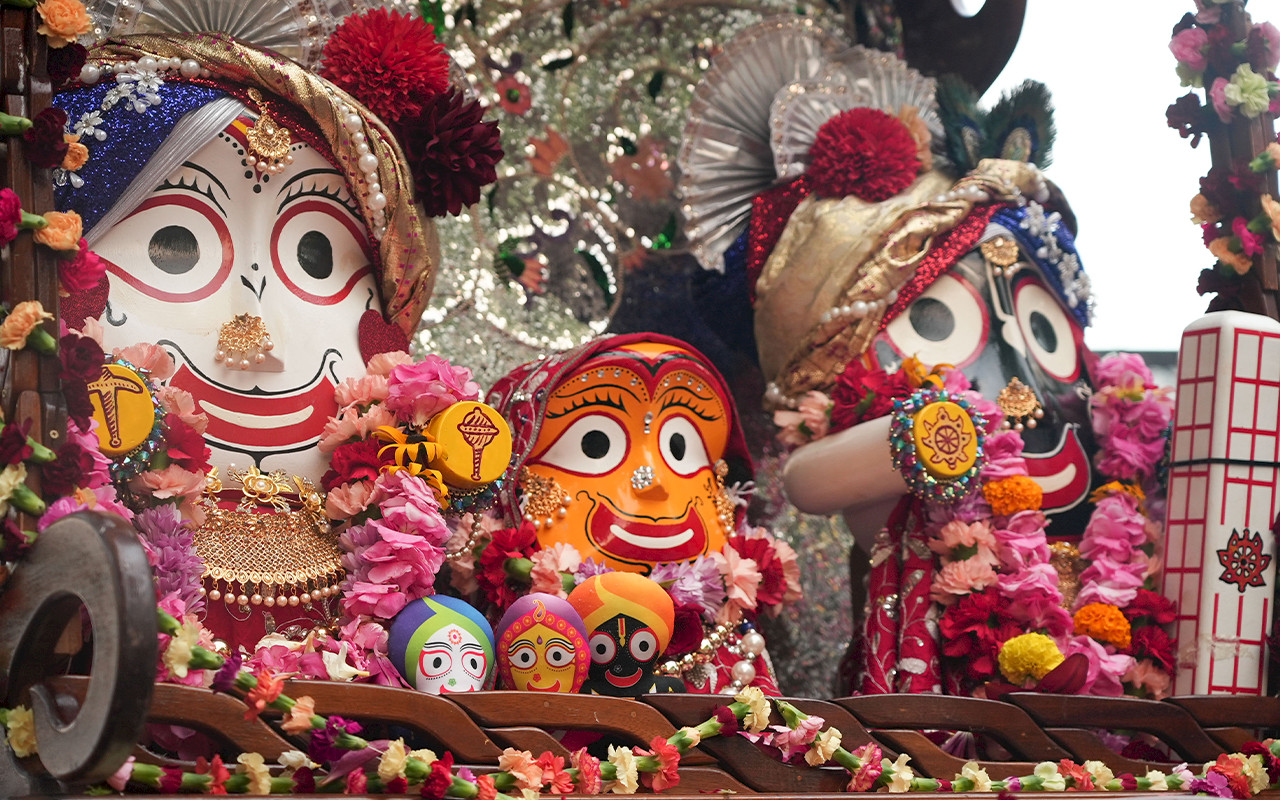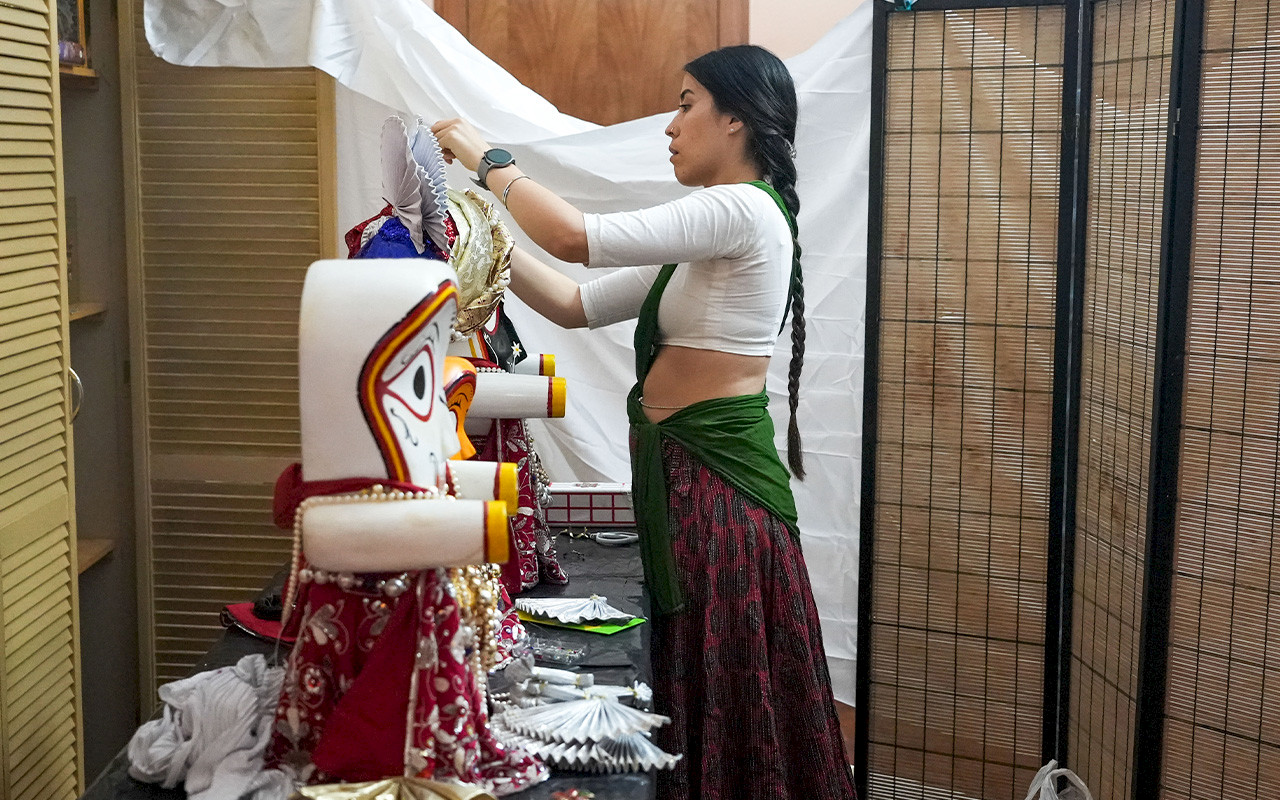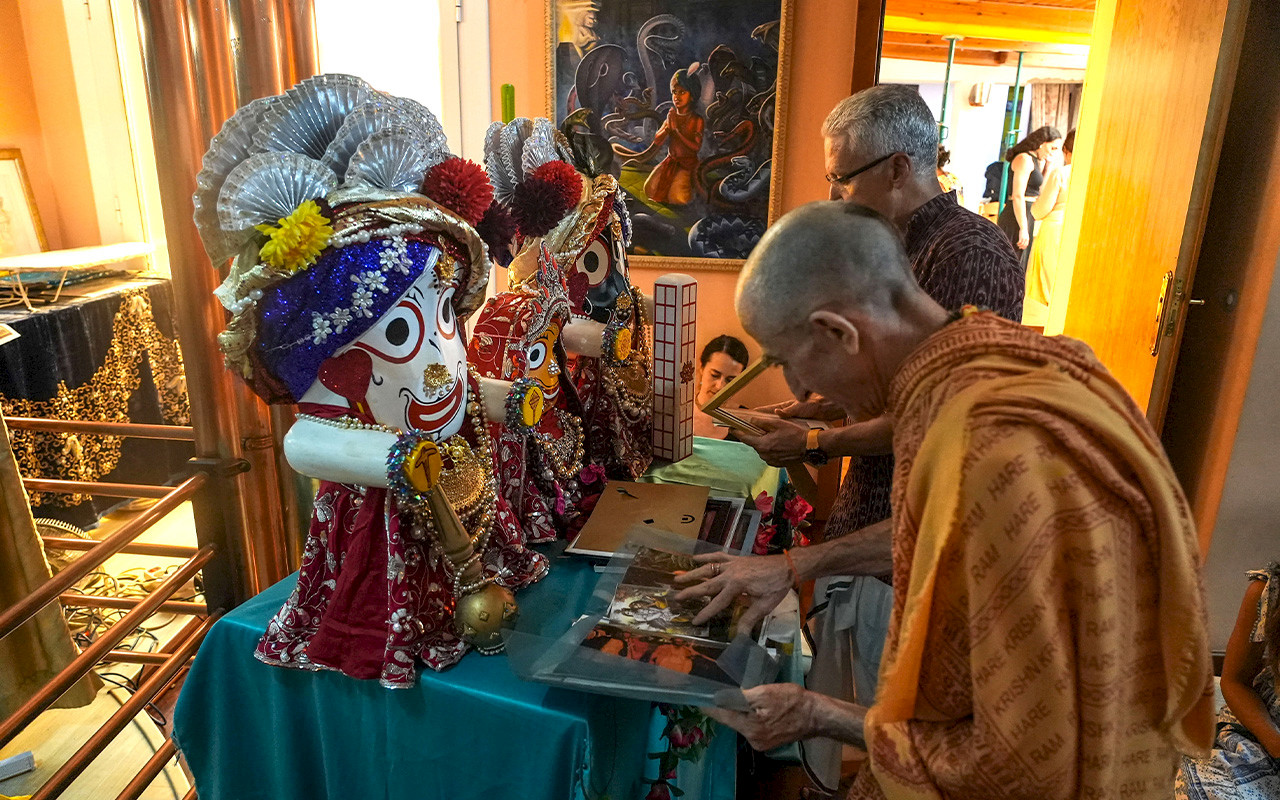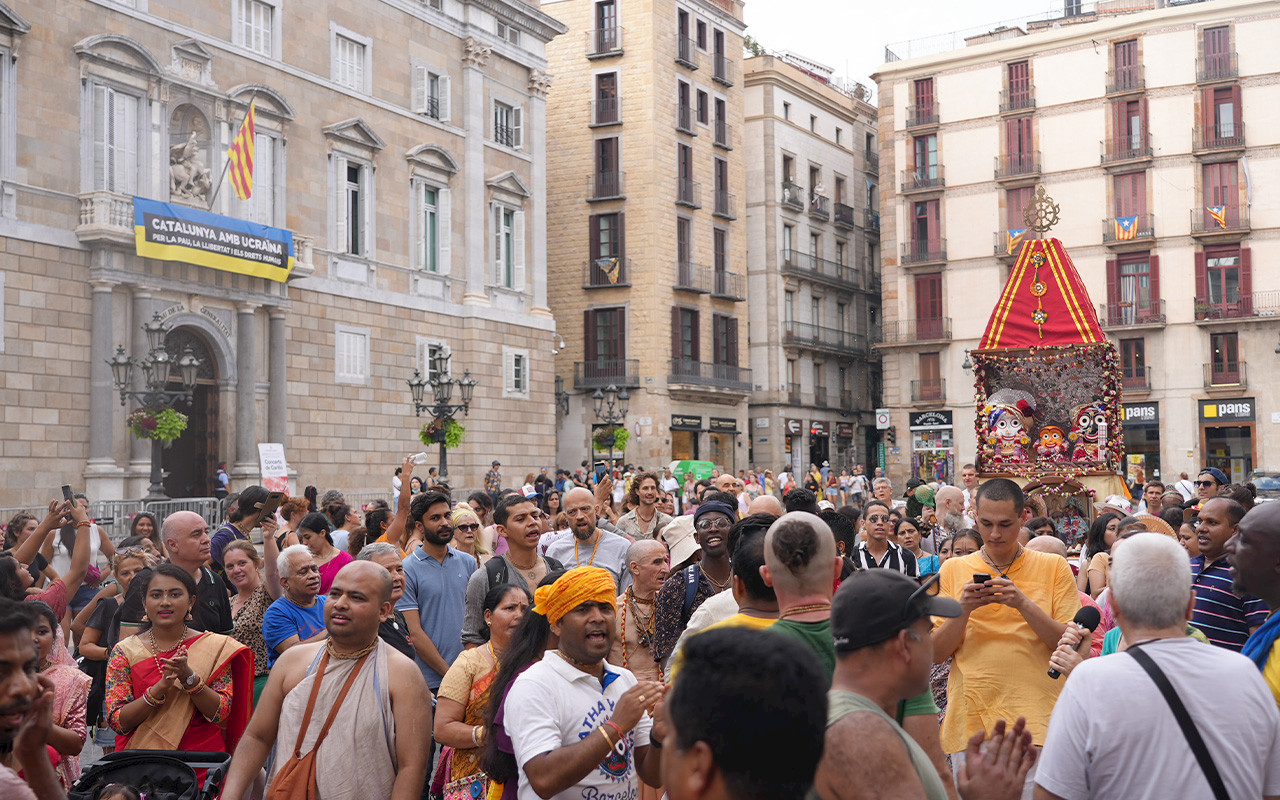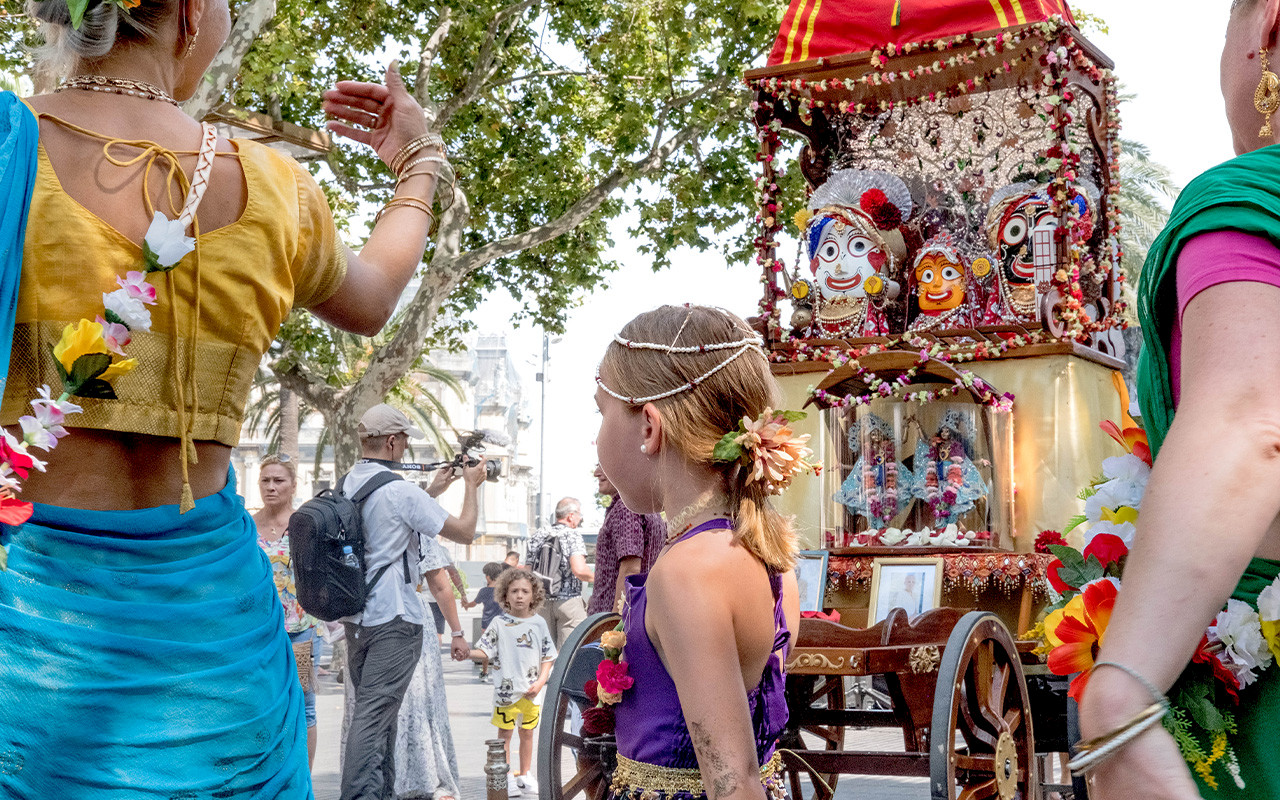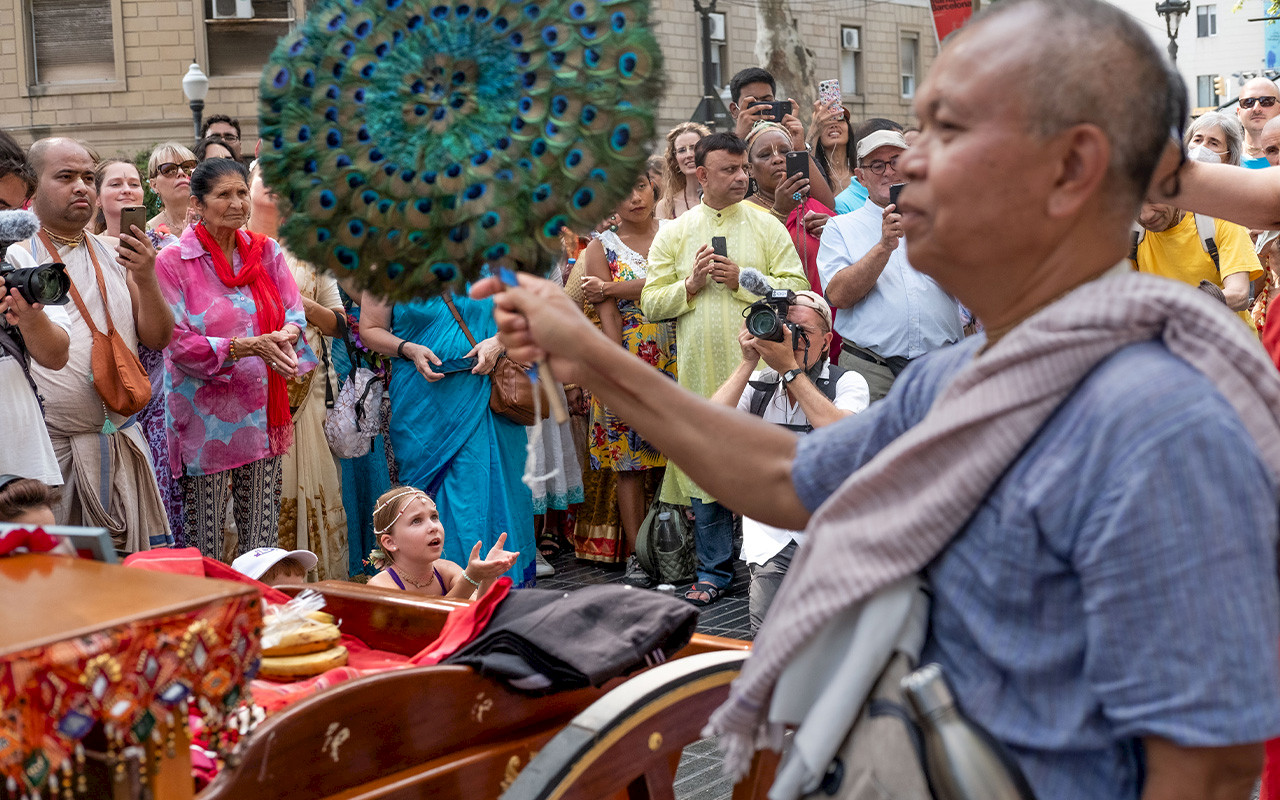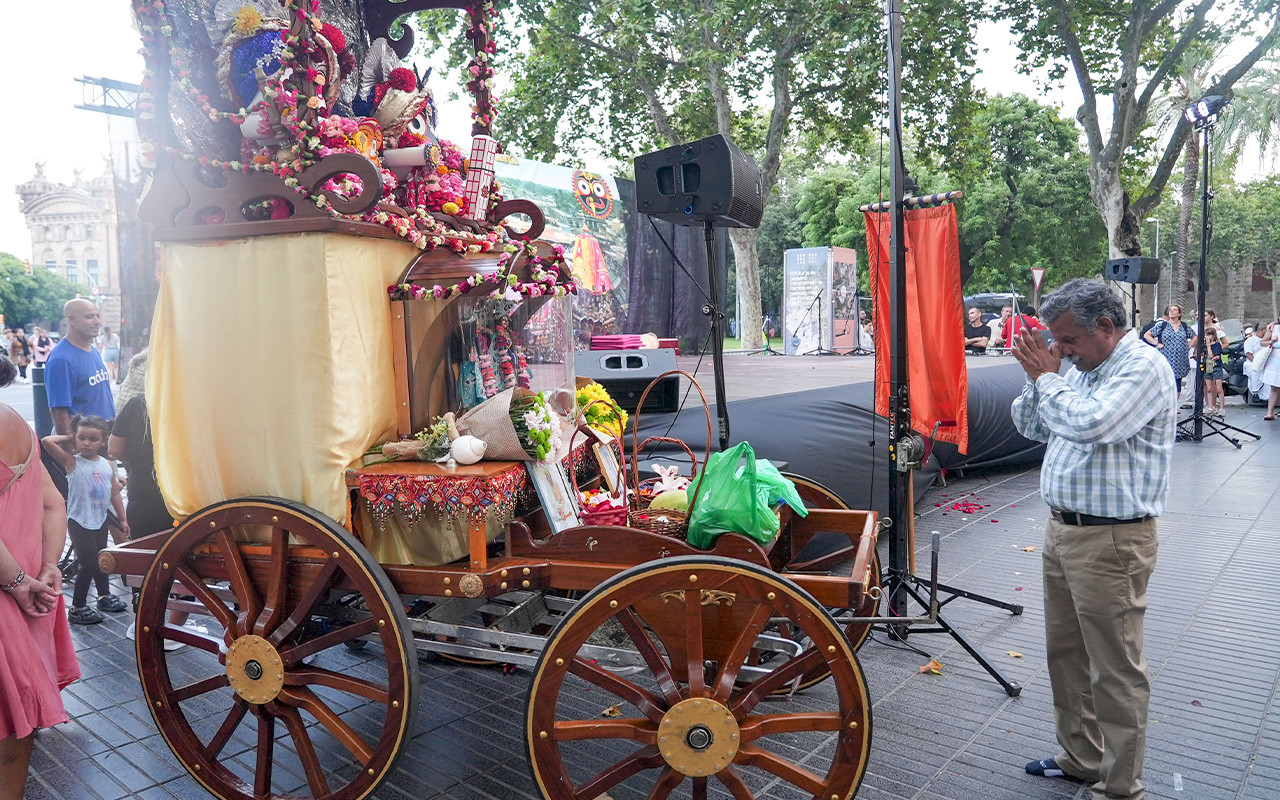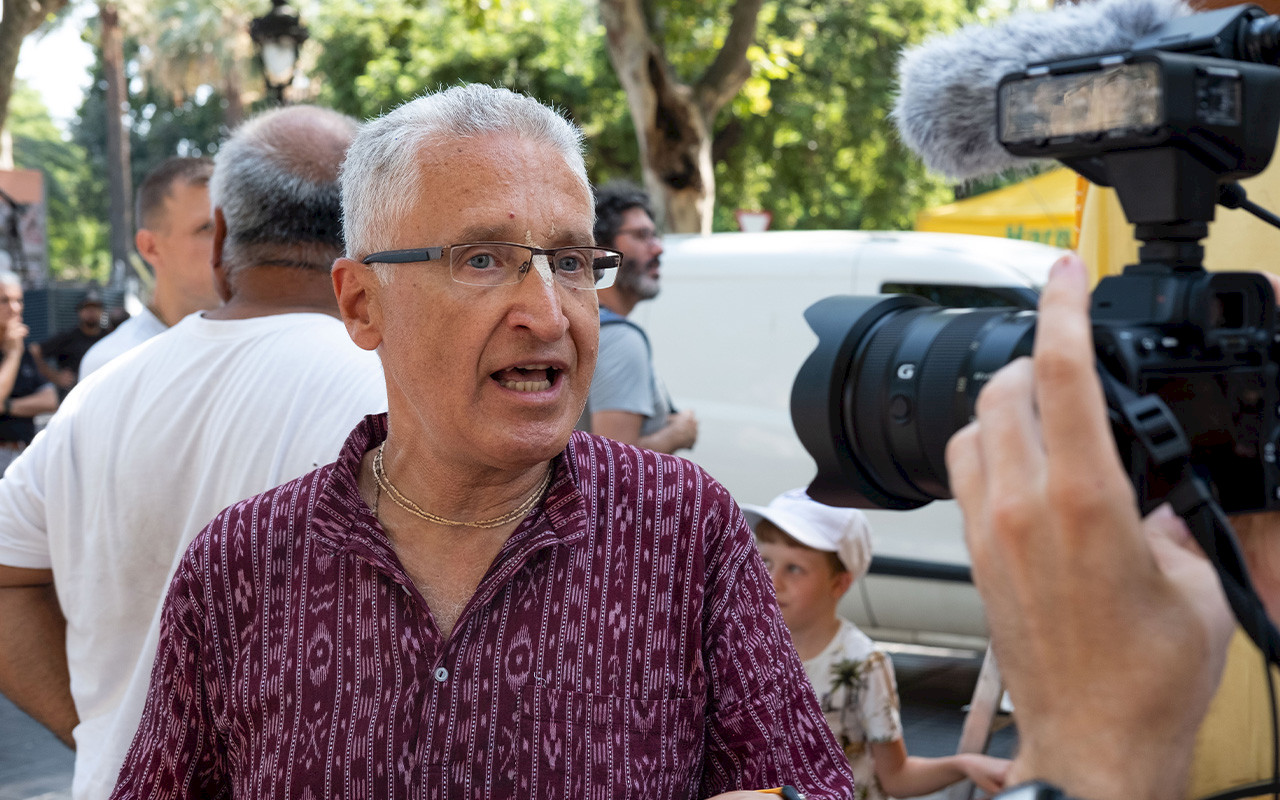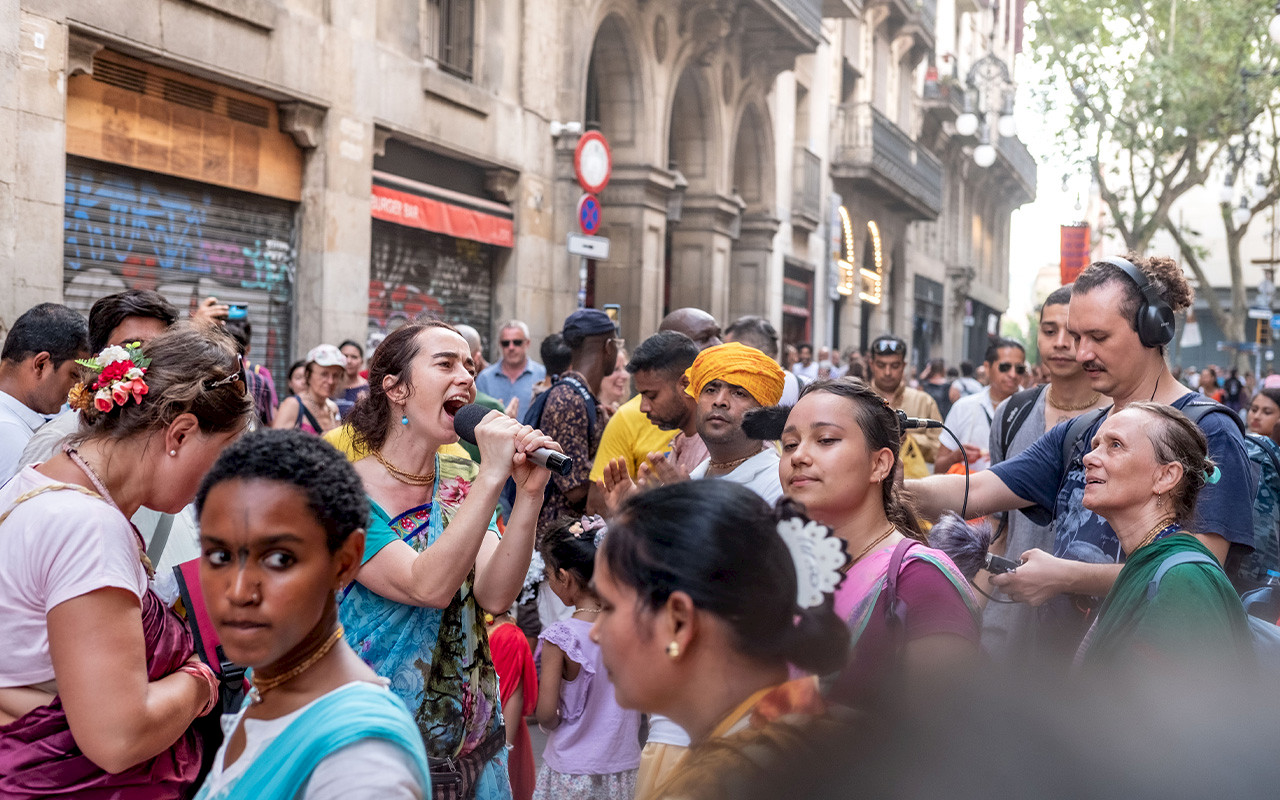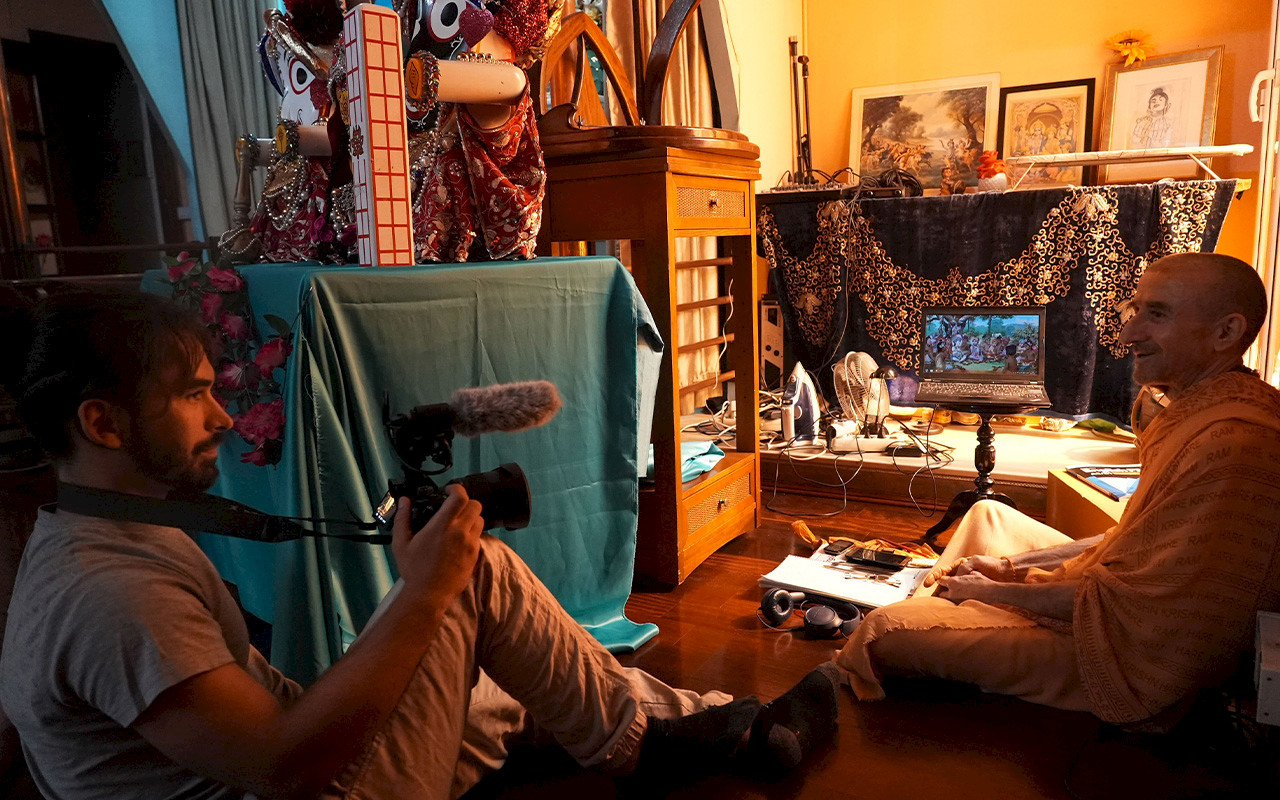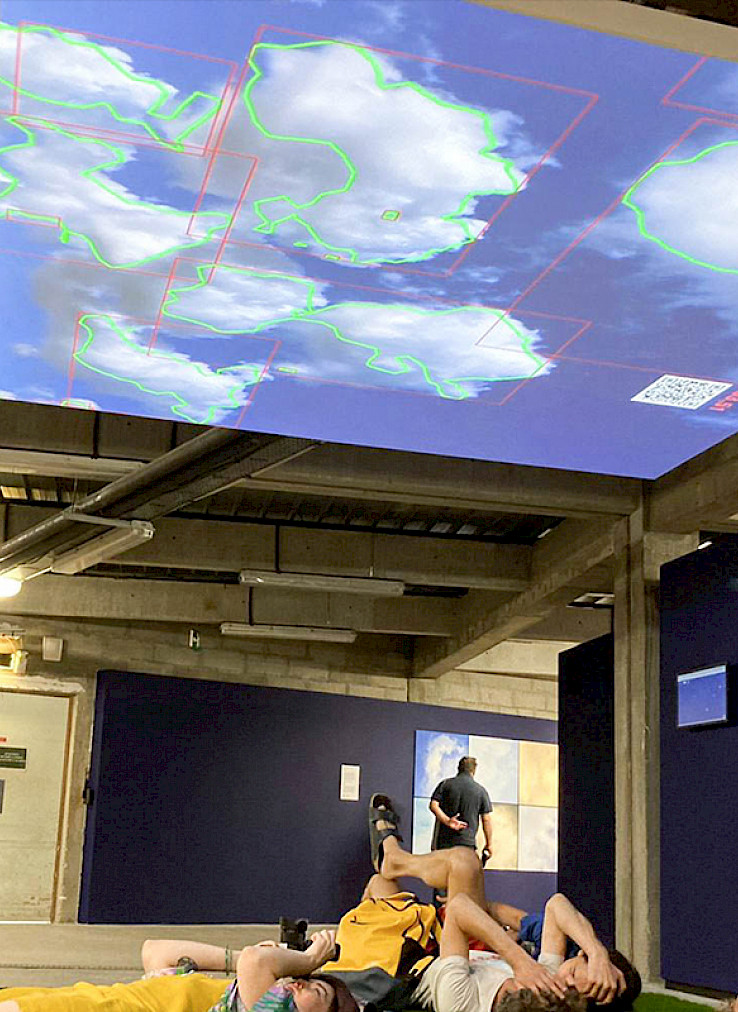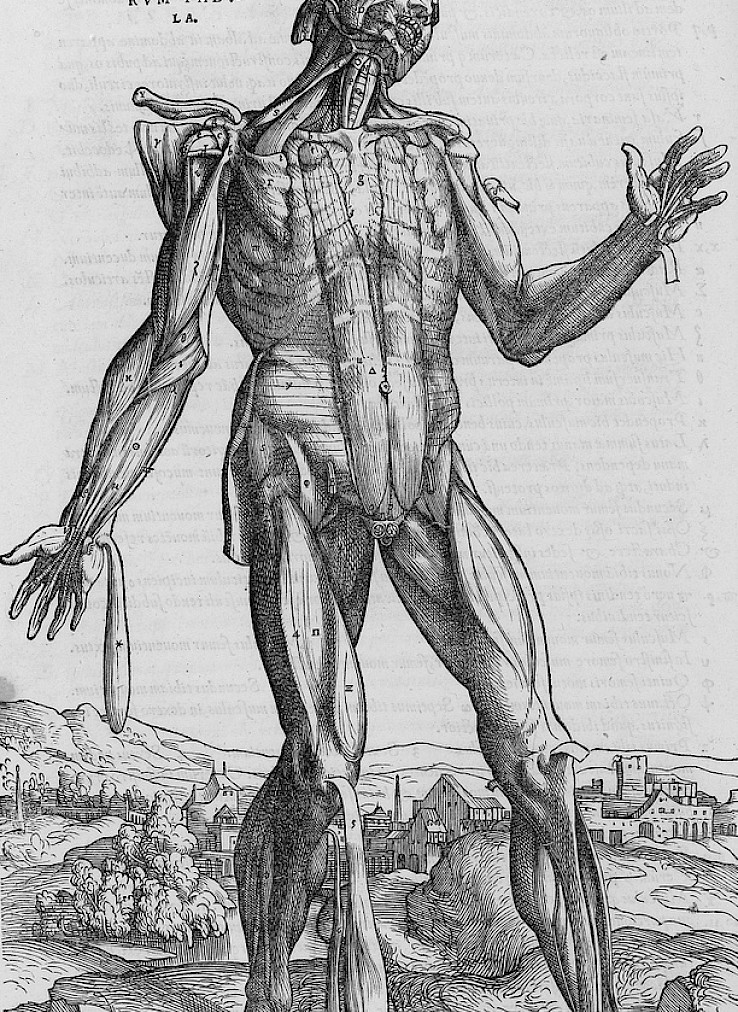In the context of the Visual Trust project, we have attended the annual Ratha Yatra ritual organized by the Hare Krishna group (ISKCON) in Barcelona to study one of the most international Hindu religious expressions. It has been an opportunity to wear our complete audiovisual equipment for the first time and film the ritual's different stages and preparations, focusing on the relationship with the divine in both its public and intimate dimensions. Thanks to the collaboration with the ISKCON group in Barcelona, the Visual Trust team members have obtained audiovisual material through interviews and participant observation for task 2.2, focused on trust in Hindu religious images conducted by Juan Francisco Cuyás.
The Ratha Yatra is a ritual procession originating from the Jagannath temple in the province of Odisha; however, since the 1970s, the Hare Krishna community has worked for its internationalization. Today it is celebrated worldwide in cities on all continents thanks to ISKCON and is a benchmark for the presence of Hinduism internationally. It is an auspicious and joyous time for Hindus. Songs, dance, and loud manifestations of joy are forms of pious expression during the celebration, revealing the close devotional and affective relationship between the devotees and Krishna (synonymous with Vishnu). The procession re-enacts the mythical event of the return of Jagannath (Vishnu's avatar) and his two siblings, Balabhadra and Subhadra, to the home of their adoptive mother. Along with the celebration of Krishna's birthday, this is a significant moment in the Hindu calendar, particularly for the followers of Vishnu, also called Vaishnavas.
Some authors indicate that one of the possible origins of this practice is since in India, especially in ancient times, people of the lower castes could not access the temples to receive the precious darshan as they are carriers of impurity. Darshan can translate as "vision", but in the Hindu context, it is a fundamental term that refers to the specific blessing through the gaze offered by God's image to the devotees inside the temple's Sancta Sanctorum. Prayers and devotion in India cannot be understood without the gaze since, in Hinduism, images are a full-fledged manifestation of God. For this reason, leading out the images in the procession is a way for all people to receive the given divine grace. In addition, in the present, this ritual can be understood in its transcultural and migratory dimensions. In order to understand the complex assembly that an event like this articulates in any social context outside India through a multiplicity of mediums, including virtual platforms, it is critical to address how different sensitivities and ways of trusting sacred images shape the idea of God from a broad ethnographic epistemology.
From the Visual Trust approach, we wanted to delve into the pious and trust relationship that Hare Krishna devotees, other Hindu devotees, or just surprised attendants on the street generated with the image of Jagannath. In this audiovisual fieldwork, we were able to verify again that for Hindu believers, unlike people from other religious groups, the images of divinity are not mere representations but earthly incarnations of the deities. An example that sheds light on this ontology of images as individuals was the moment of the preparation of Jagannath. Murtis (sacred sculptures of God) must be dressed and adorned as monarchs for the public appearance, any detail needs to be considered and handled in detail, and above every recommendation, they cannot be shown in public in raw material. Otherwise, these would be bare to any profane person's gaze (including our cameras). Therefore, only one person was allowed to dress the gods and see them "naked". The person in charge of this task must follow strict guidelines that enable her to carry out the service without making ritual mistakes or polluting the gods with the impurity that comes with profane life. This preparation of the sculptures is an intimate way of intensifying the image and turning it from a simple sculpture into a being that is more than a human. It has an aesthetic, but also an ethical and ontological sense since it reaffirms their status and social position.
Another essential aspect we did not want to overlook is the transnational scope. The Hare Krishna has been a leading group in spreading Hinduism, specifically through expanding the worship of Krishna (synonymous with Vishnu) worldwide. However, it is worth asking how this internationalization process may have altered how Hindu images exist in the social space, as well as how devotees relate to and intensify them. India is especially notorious for boasting one of the richest visual imageries, crossing religious and profane boundaries. While a complex religious icon in the symbolic landscape of India is received as granted public reality, yet intimately connected to each individual, in Barcelona, for those who are not used to it, it can become an extravagant and even encounter. Similarly, Cristina Grasseni and Federico de Musso used the concept of "multivocality" (2016) to refer to the different offline and online forms of enactment and identity expression of a Catholic public procession of the Italian diaspora in Boston. From this proposal of "multivocality" as a way of grasping the assembly of cultural expressions, ways of seeing and retaining personal and group identification, we seek to understand how the vision or darshan of Jagannath and his cohorts poses new questions about what it means to trust in religion nowadays.
One of the observations we made in this regard is that the Hare Krishnas, despite being an eclectic collection of devotees from unalike nationalities who rely upon technologies to remain structured, they are organized by strict devotional guidelines. These guidelines, established by the guru and founder of ISKCON, Swami Prabhupada, configure the daily routines and practices inside the organization, as long as its hierarchy. In this sense, there is a contrast between public opinion towards the Hare Krishna, sometimes considered as "fake", or just Westerners disguised as Hindus, versus the internal and intimate orthodoxy structured around the reading of Sanskrit sacred texts such as the Bhagavad-Gita and the nurture of individual relationship with Krishna. That devotional discipline is not unknown in India, and in the Sanskrit tradition is recognized as Bhakti Yoga, which can translate as the path of self-realization through the worship of God. Those Hindus who follow this path are very aware of Hare Krishna's commitment to God. Their volunteer work for the community (Seva) as one of the active Hindu congregations in Barcelona is well received by Hindus from South Asia (mainly Punjab, Nepal, and Bangladesh). Again, the disparity between joyful and almost wild Hare Krishna practices in public space contrasts with the temple's intimate and quiet aspect of devotion. Any unfamiliar witness in the street encountering the Ratha Yatra may feel a mixed visual reaction of surprise and awe. However, for the Hindu devotee, there is no such contradiction between these two ways of connecting with God.
In the future, we will have the opportunity to open the final reflections on this fieldwork in the form of a short or medium-length film that we will upload on this website. Follow us on the website and social networks for more information and news.
Thanks to ISKCON Barcelona for the collaboration and their time, and to the photographer collaborator of the project Ezequiel Rodulfo for the images shown in this article.
References:
De Musso, F. & Grasseni, C. (2016). Picturing Intimacy: Mediation and Self-representation in Boston’s Religious Festivals. Anthrovision, 4.2. https://doi.org/10.4000/anthrovision.2359
Back to the list


